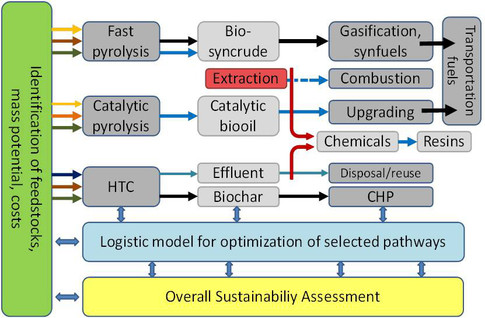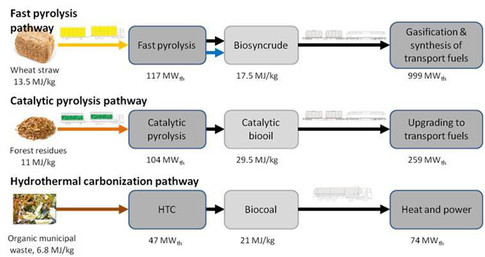Results
Results
BioBoost targets the following objectives
- Identification of residual biomass potential in EU-28 and development of supply concepts for de-central conversion plants (WP1)
- Conversion of biomass to intermediate energy carriers by thermo-chemical processes (WP2)
- Improvement of the economic performance of the energy carrier by investigating the recovery of high value chemicals and nutrients from conversion processes (WP3)
- Development of a simulation model optimizing biomass and energy carrier logistics (WP4)
- Clarification and testing the technical and economic utilisation paths of energy carriers (WP5)
- Investigation of the techno-economic feasibility and environmental sustainability of the selected bioenergy carrier pathways (WP6)

BioBoost project structure.
From biomass feedstock to fuel and power
Three reference pathways were defined to create base scenarios for the sustainability assessment of biofuels production from waste biomass. These pathways rely on producing intermediate energy carriers in local plants by fast and catalytic pyrolysis as well as by hydrothermal carbonization, which are then transported to central or remote plants for further conversion into biofuels or for usage, respectively. Each pathway consists of a step for biomass preparation, biomass transportation, local conversion, intermediate energy carrier transportation and further central conversion step, for which mass and energy balances have been set-up.

Feedstock, Process steps and products for the three reference pathways along with the
LHV of fuels and design (input) capacity of conversion plants.
